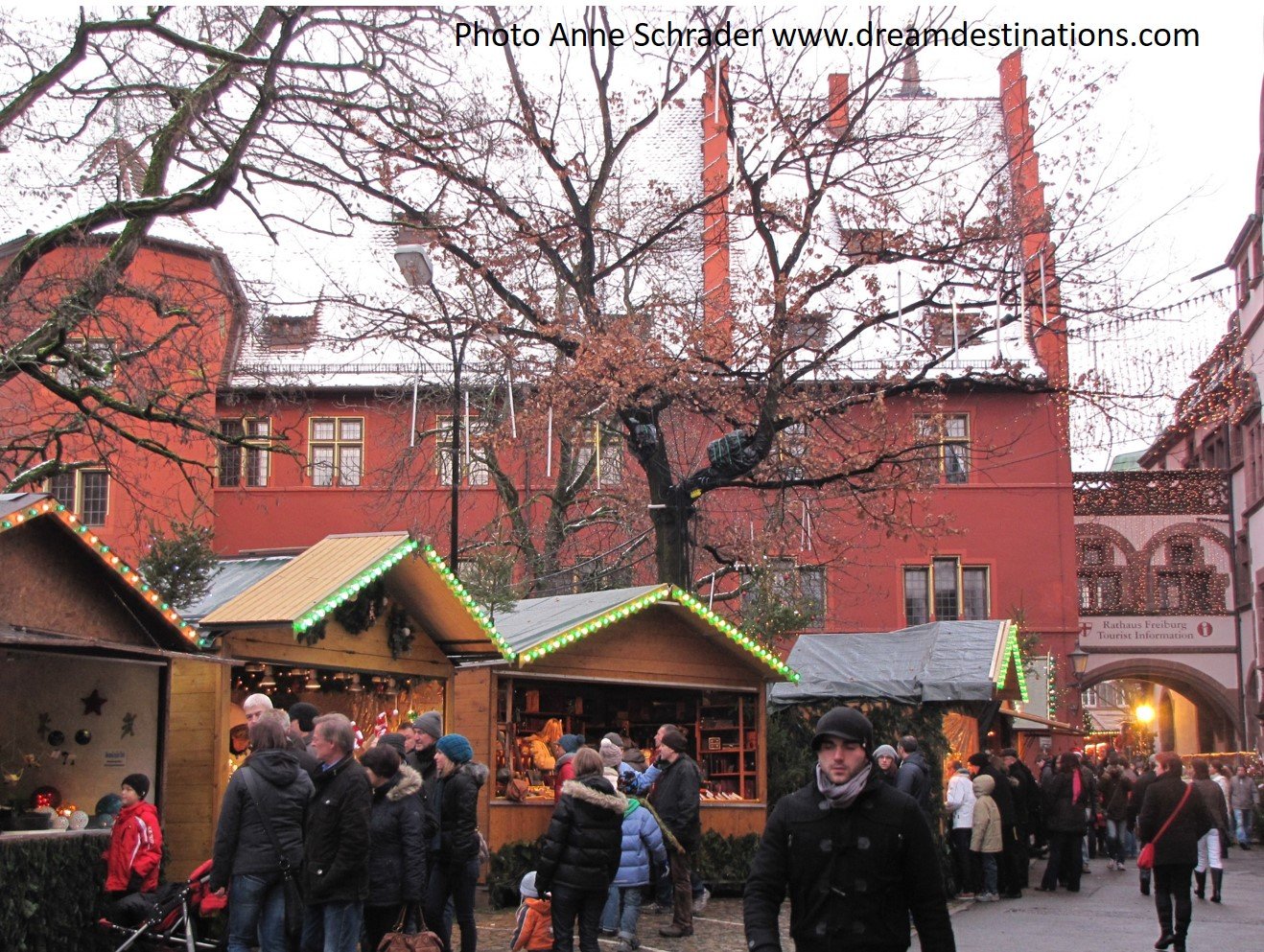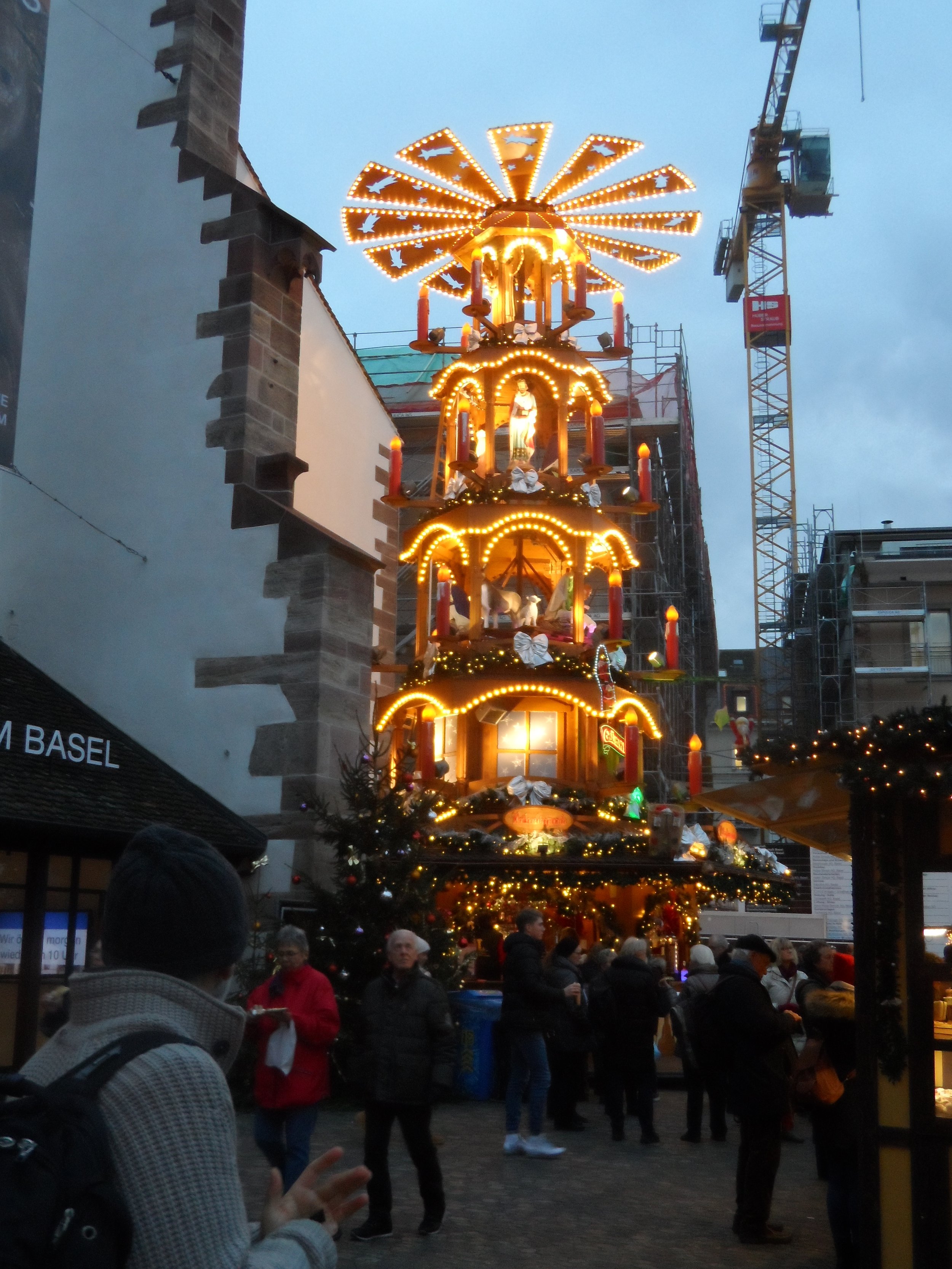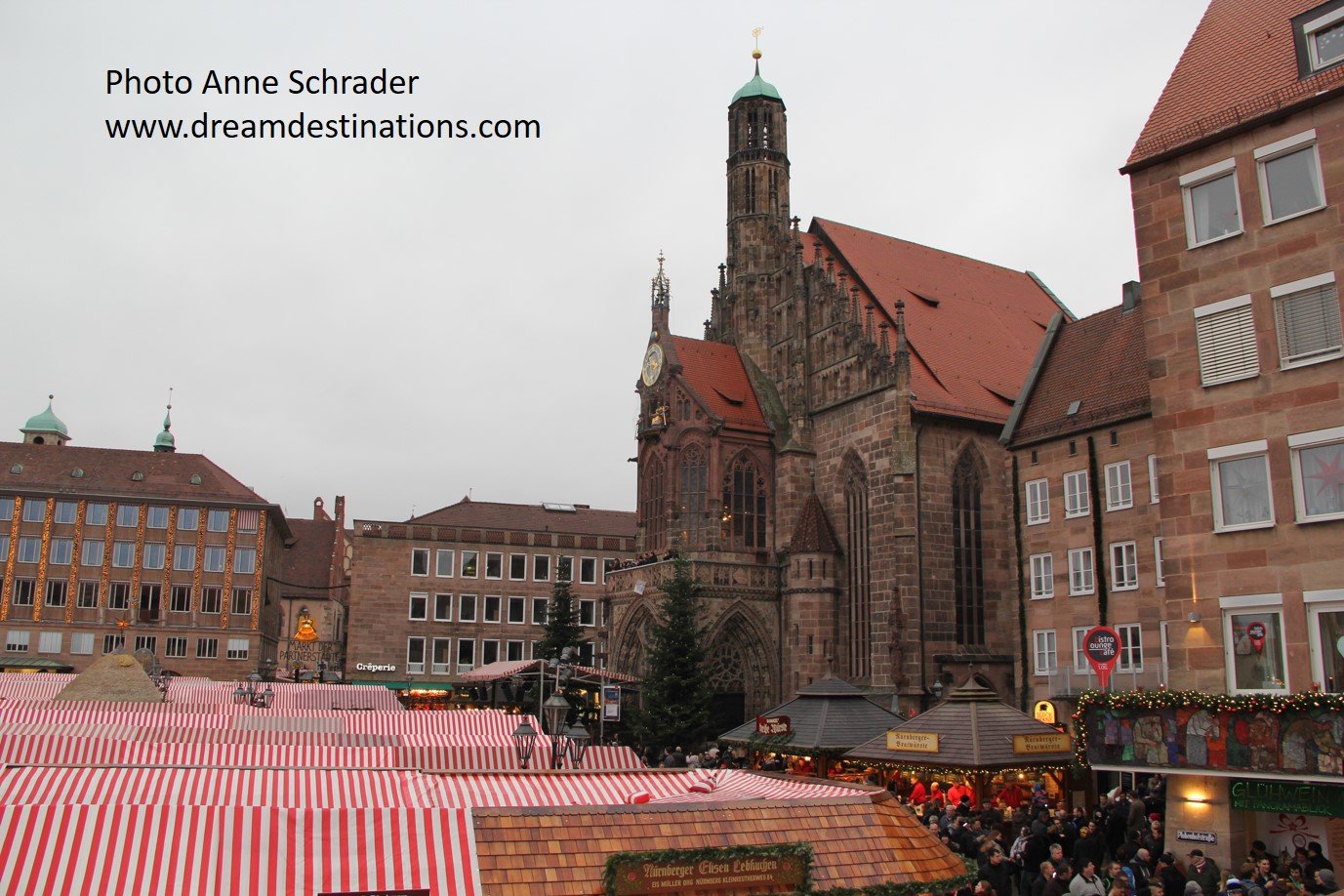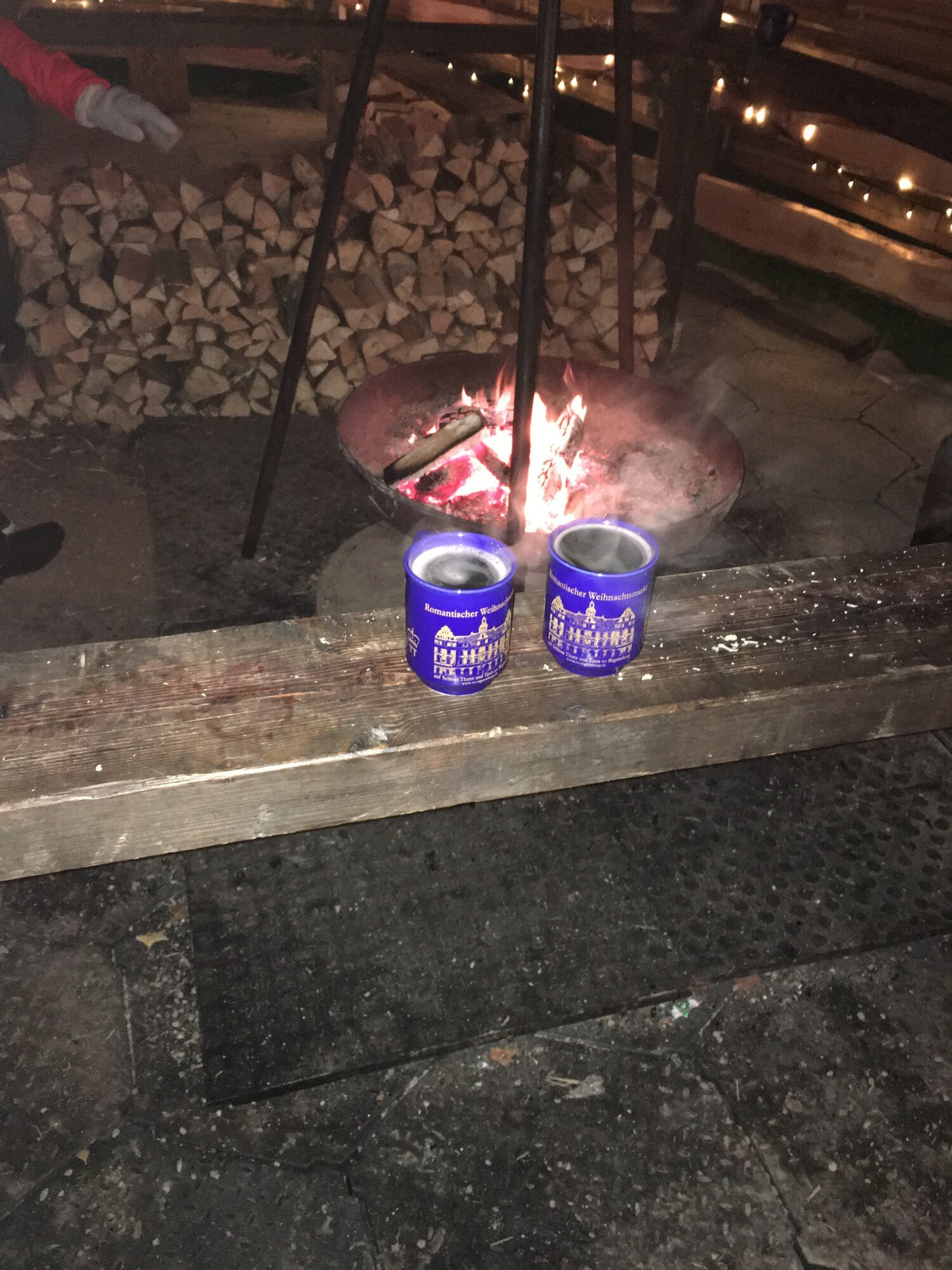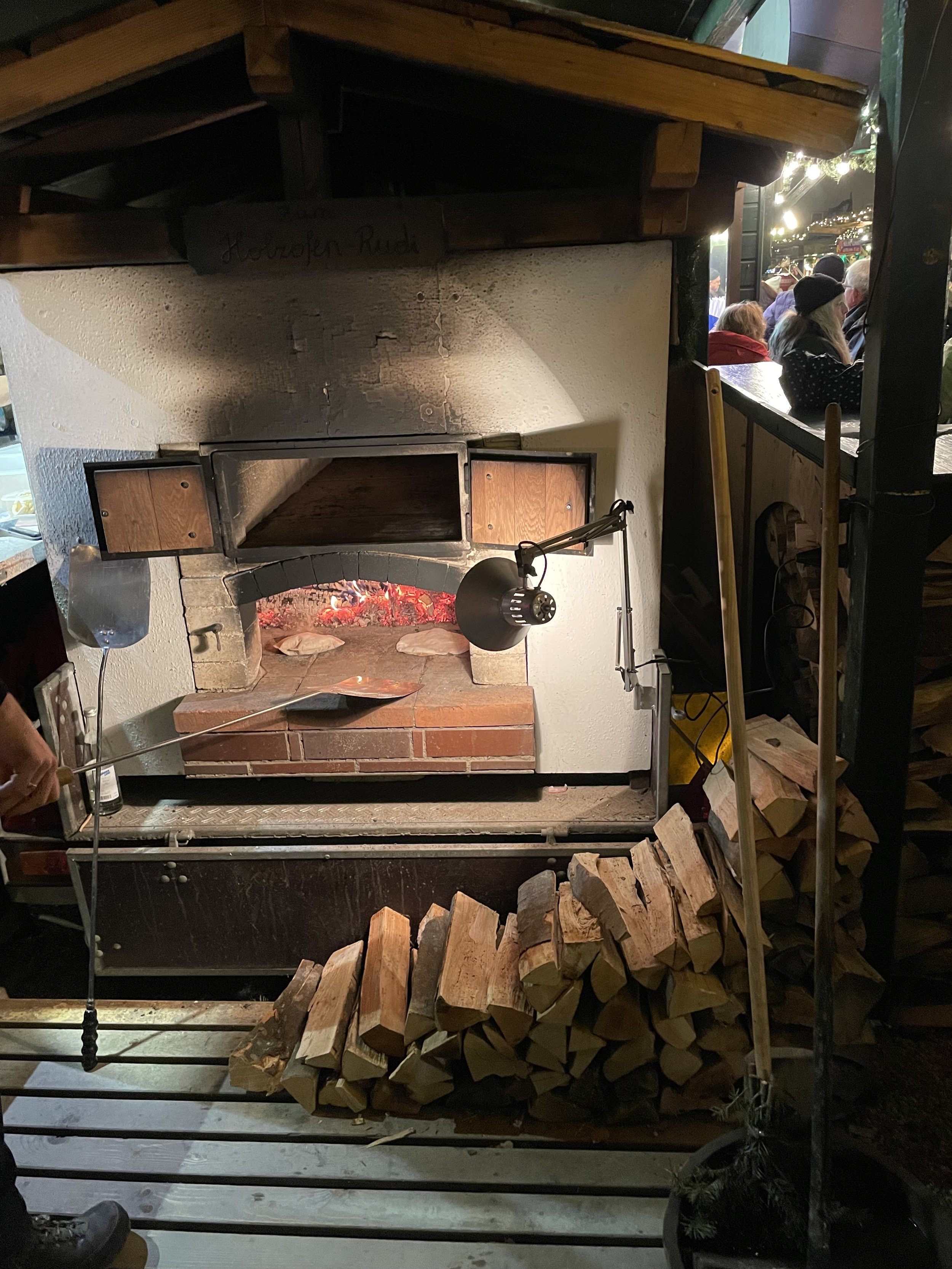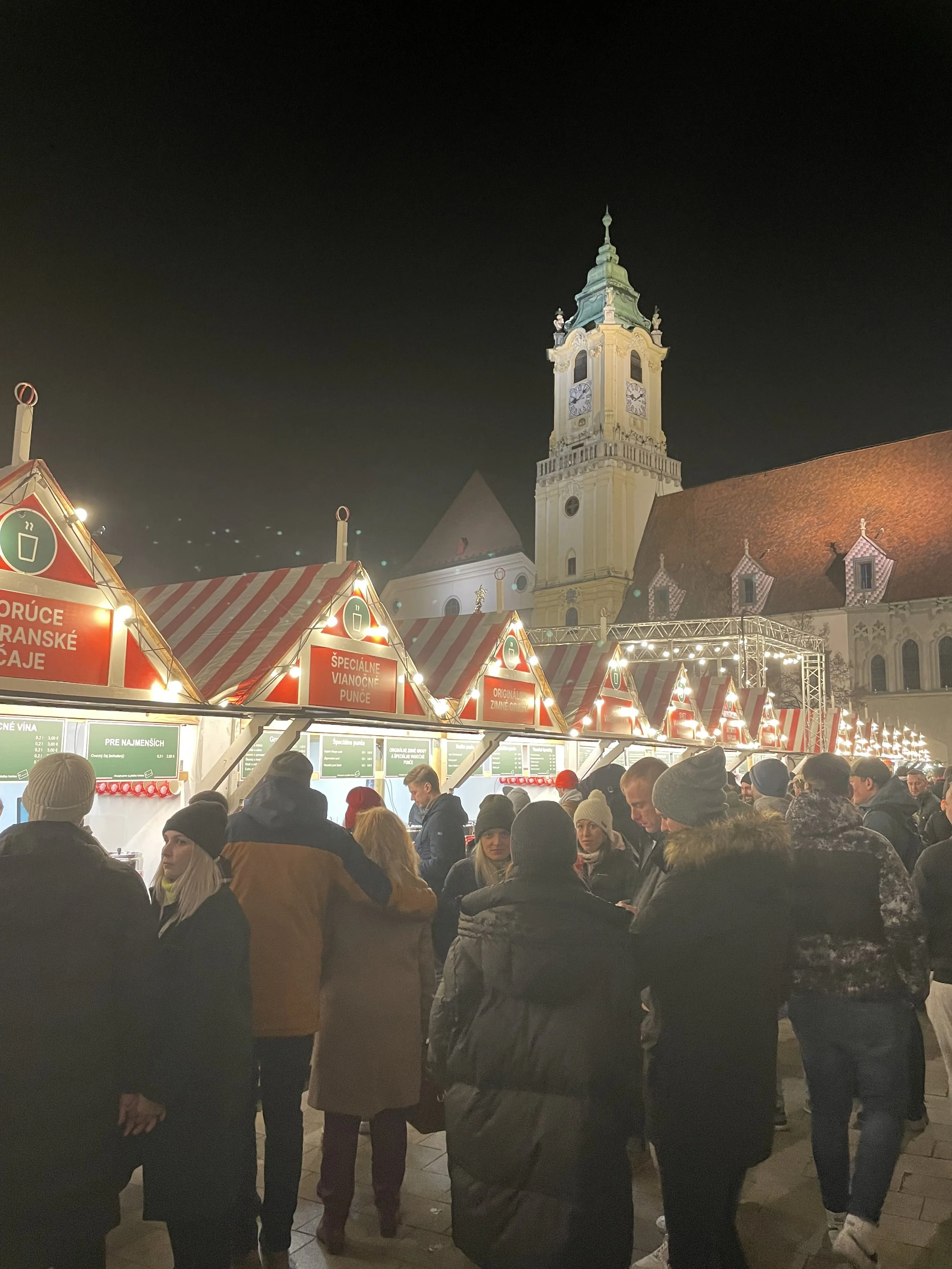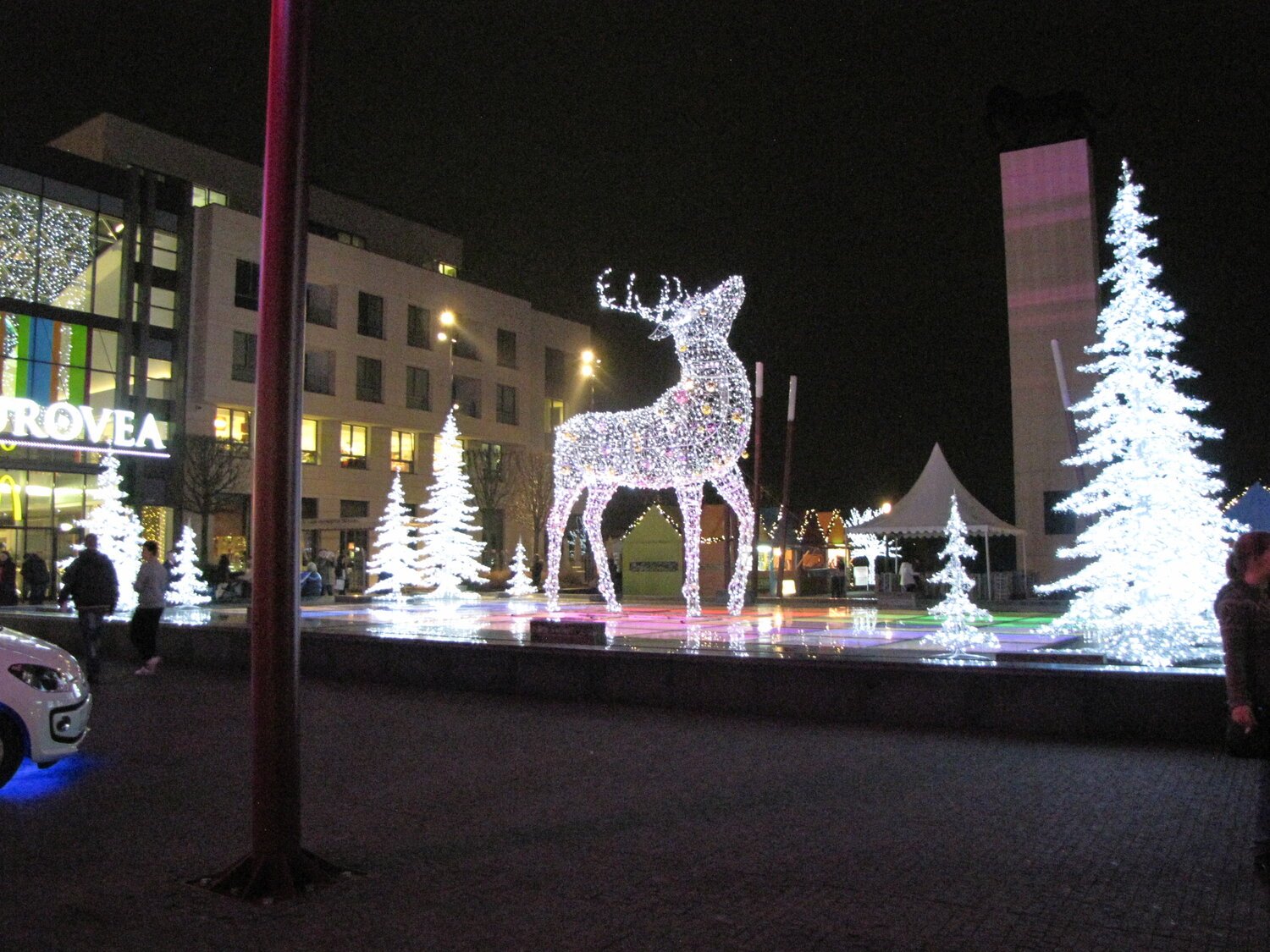Christmas Markets Port Pictures
Hank Schrader, USMA '71, Europe Destination & Europe River Cruise Expert
Anne Schrader, Certified Travel Counselor & Certified Luxury Cruise Specialist
Christmas is a good time to celebrate joy and the beauty of the season.
So, I thought I’d provide you with some pictures of the many Christmas ports you can visit on river cruises. We all know pictures are the best way for us to really understand how we might get to experience these wonderful and colorful markets.
My hope is that these pictures might inspire to take a river cruise on one of these two rivers to experience the magic of the season in Europe next year or the coming years
We will start on the Rhine and then go to the Danube.
Cologne, Germany
The huge Cologne Cathedral, with its twin pointed towers, is the best-known landmark in Cologne. Construction of the cathedral begin in 1248 and took the next 600 years to complete.
Next door to the Cathedral Romano-Germanic Museum which has artifacts from the old Roman town, including part of an old Roman villa.
Hohenzollern Bridge--This is one of the 7 bridges that cross the Rhine in Cologne. About 1200 trains pass over this bridge daily in route to the main train station.
The old town square is also another good site to visit.
It is famous for its many Christmas markets—we have visited several times and love the hustle and bustle of the season. Our favorite is the area around the old town square. Please enjoy these pictures:
Cologne
Cologne
Cologne
Rüdesheim, Germany
The town of Rüdesheim is a charming wine village.
It is famous for the great white wines grown in the region, along with a special coffee drink, aptly named Rüdesheimer coffee (Flambé Asbach brandy, sugar cube, coffee garnished with whipped cream).
A lively lane, the Drosselgasse, is lined with taverns and wine-cellars.
The Christmas Markets are small here but a lot of fun.
Rüdesheim
Rüdesheim
Rüdesheim
Ludwigshafen, Germany
You won’t really visit anything in Ludwigshafen because it is the gateway to two great tours—Heidelberg and Speyer.
Heidelberg is a historic university town. Top sights in Heidelberg include a visit to the red-walled Castle ruins, with its Great Vat, a 49,000-gallon 18th century wine cask. There are beautiful views of the Neckar Valley and Heidelberg below.
The old town area is a great area to explore. This is especially true during the Christmas Markets. Here are some great pictures of the wonderful Christmas Markets, which were even more fun when it snowed during one of our visits!
Heidelberg
Heidelberg
Heidelberg
Speyer is a German town famous for its large Romanesque Cathedral. It is the largest in Europe. Speyer is part of the historic pilgrimage route of Santiago de Compostela.
This once walled city had 68 towers guarding it. The most important tower still remains and at 188 feet, is one of the tallest defensive watch towers in all of Germany.
The Christmas Market area is near the Cathedral, and we were especially impressed with the food booths.
Speyer
Speyer
Speyer
Strasbourg, France
Strasbourg’s old town is a wonderful stop but especially so for Christmas. After several visits to Strasbourg, it still beckons us back. Our first visit was on Bastille Day (14 July) and the floodlights on the Cathedral were breathtaking.
There are several main attractions. The Cathedral of Notre-Dame is massive and the Cathedral square always has lots of life.
Wander down to Petite France—the home of tanners, fishermen and other artisans—the half-timbered areas are just stunning.
Try some food here—the blend of German and French food results in dishes you won’t soon forget.
The Christmas decorations in Strasbourg are excellent in the old town area. The narrow lanes just add to the ambiance.
Strasbourg,
Strasbourg,
Breisach, Germany
Breisach is another gateway city—there are another two great options here—Freiburg, Germany and Riquewihr, France.
Freiburg, Germany (the official name is Freiburg-im-Breisgau) is a blend of old and new.
This city among other claims to fame is said to the sunniest city in all of Germany. Located on the southern edge of the Black Forest, and near the Rhine River, it was a good trade location and rich burghers, and the mercantile guilds were the original political force in the city.
It is a university town (started in the 1400s), once was a walled city but its number one sight is the Freiburger Münster (Freiburg Cathedral) (started in the 1300s). The cathedral was completed in 1513.
We have visited several times and especially like the 3 Christmas Markets area here.
Freiburg,
Freiburg,
Riquewihr is a constant splash of colors, half-timbered buildings and wine shops jumbled together that just is so charming you will not know where to look next.
This medieval walled city still has most of its walls. There is a watch tower that today houses a museum about the defensive structures of the city, the people who manned the defensive structures and the weapons they used.
Don’t forget to shop, enjoy the food or a snack and sample the white wines this region is so famous for and brought wealth to this village.
This may be the most charming Christmas village you will ever see—maybe these pictures will convince you we’re right!
Riquewihr
Riquewihr
Riquewihr
Basel, Switzerland
Basel is the 3rd largest city in Switzerland. The historic old town area, on the left bank of the Rhine, was once an old Roman citadel on the high ground. The Munsterplaz (cathedral square) hosts a large church and some wonderful Christmas Markets.
A short walk from this square leads to the other good Christmas Markets of Markplaz (Market Square).
Basel
Basel
Basel
Now, we are off to the Danube.
Nuremberg, Germany
The old walled city of Nuremberg is one of my favorite places in all Germany. It has an impressive castle, is crisscrossed by a river, and has some cool old buildings. The central market square, with its, beautiful fountain, is another great place to see and this square hosts one of the largest Christmas markets in Germany.
It is famous for its many Christmas markets—we have visited several times and love the hustle and bustle of the season.
Nuremberg
Nuremberg
Nuremberg
Nuremberg
Nuremberg
Regensburg, Germany
The town of Regensburg is located on the northernmost point of the Danube River. It started out as a Roman town, has a medieval stone bridge the crusaders crossed on their way to the Holy Wars (which is guarded by an impressive watch tower), and has a good old town area. Anne’s favorite hat maker is here, so we find this one of our favorite Bavarian towns.
The Christmas markets are awesome—there are at least 3 or 4 but our favorite is the Thurn and Taxis—it is an old fashion market, with blazing fire pits and has an entrance fee which AmaWaterways includes in your voyage. It is romantic and has some very good quality goods for sale.
Regensburg
Regensburg
Regensburg Thurn and Taxis
Regensburg Thurn and Taxis
Regensburg Thurn and Taxis
Regensburg Thurn and Taxis
Regensburg Thurn and Taxis
Passau, Germany
Built on a tapering peninsula of land, the old town portion of Passau is located right at the German and Austrian borders. Three rivers join here—the Danube, the Inn, and the Ilz. On the high left bank of the Danube (sailing downstream), a fortress dating back to the 1400’s, overlooks the old city center. There are several impressive churches worth a visit.
There is one really good Christmas market in the main square—Anne found some great gifts on a recent trip.
Passau
Passau
Passau
Passau
Passau
Melk & Dürnstein, Austria
Melk is famous for its impressive, huge abbey and collection of rare books and manuscripts. The abbey was initially built in the 11th century and has been updated several times, and the last major improvements to this baroque structure were completed from 1702 to 1736.
There is a small market in Melk, but we enjoyed it—we watched a blacksmith work on handmade gifts.
Melk
Melk
Dürnstein, Austria
Dürnstein, Austria
Dürnstein, Austria
Later as you cruise through the one of the great scenic waterways of Europe, the Wachau Valley, you will arrive in the charming village of Dürnstein (about 600 population). The blue tower of the Abbey, the cute little shops, and the castle ruins on the hillside (where Richard Lionhearted was held in prison for ransom), make this a favorite of many river cruisers. It is so small there are not any real booths for Christmas, but the shops often have special Christmas items.
Vienna
Vienna is the capital city of Austria (it once the capital city of the Austro-Hungarian Empire), is a city of impressive palaces, great museums, and good food. It is also known as home for the great composers of classical music, and many go to concerts in Vienna while on their cruise.
There are several great markets here but the two best are at the Rathaus (town hall) and the famous summer palace of the Hapsburgs—Schönbrunn Palace. There are lots of booths in each market—you won’t go away disappointed!
Schönbrunn Palace
Schönbrunn Palace
Schönbrunn Palace
Schönbrunn Palace
Bratislava
The capital city of Slovakia is a fun place to visit. Located at the border of Austria and Hungary, this is a newer country (it declared independence in 1993) in Europe.
For much of its history, it was in the Austro-Hungarian Empire and then a part of the Czechoslovakia. The symbol of Bratislava is the fortress that overlooks the city. It is also known for its whimsical bronze figures, which delight cruisers in the old town area.
The old town area has a great Christmas market and there are also a good one in the new town area.
Bratislava old town area
Bratislava new town area
Budapest
By far the most impressive city on the Danube, Budapest, the capital of Hungary, is a town we love to visit. It is really two towns—the high town of Buda that overlooks the banks of the Danube and Pest on the flat land. They are united by several bridges, but the Chain Bridge is the most important and is a symbol of the city.
Both sides have some awesome structures—among them Buda Castle and Fisherman’s Bastion (Buda side) and the Parliament building (Pest side). Once you visit, you will want to come back.
The best Christmas markets are on the Pest side—a highlight is the food, especially the funnel cakes baked over a charcoal fire.
Budapest
Budapest
Two Great Side Trips
Along this route, there are two great cities that are optional trips on some lines or can be included. They are not actually on the Upper Danube but are easily accessible by coach (bus) during your Danube cruise. Both are awesome, so let’s see what it might be like to visit both Salzburg, Austria, and Cesky Krumlov.
Here are two great photos, which may make you want to include these two medieval towns as an addition to your cruise. Both have good Christmas markets but the Salzburg one is larger with more booths.
Salzburg
Cesky Krumlov.
Our Final Thoughts
There are sure a lot to choose from among these two rivers. Each has their own character and charm. All I know is enjoying the season during the Christmas markets season is an experience you should go on and we would be glad to help you get there!
We are travel experts, ocean and river cruise specialists, and Europe destination experts. We have first-hand knowledge of almost anywhere you want to visit in Europe. We know our products and the vendors who sell them to you. We have designed special tours for dozens of clients, led several and will continue to find just the right vacation that will exceed your expectations.
When you are spending your hard-earned money for a vacation, you want an advisor who can match you with the right trip. You want someone who will understand your expectations and fuel your anticipation (or excitement) to get you the best possible trip experience. And, you want someone who can help you with the decision making process. We think we have all these qualities.
Whatever your Dream Destinations are, we are here to help you get the best possible vacation based on what is important to you! We will provide you high quality, expertly planned travel. Please give me a call 713-397-0188 (Hank) or email me at hschrader@visitdd.com . We want to help you: Savor life…make memories…Visit Dream Destinations! Your journey begins here!
ANNE has earned a degree from the University of Houston in Hotel and Restaurant Management. Serving as the President of Visit Dream Destinations, LLC, since 2016, she is uniquely experienced professional travel advisor with over 29 years’ experience in the travel industry. Among her numerous certifications, she is a Certified Travel Counselor (CTC) by the Travel Institute, considered the gold standard in travel agent certification and she is also an Accredited Cruise Counselor (ACC) by the Cruise Lines International Association (CLIA), as well Luxury Cruise Specialist also from CLIA. Having traveled often to Europe since 1989, she has expanded on her certification as a Destination Specialist in Western Europe (DS) with extensive first-hand experience in luxury vacations. She holds numerous other specialty designations from individual vendors. An expert photographer, she delights in capturing the true essence of destinations to share with all.
HANK is a certified Western European Destination Specialist (DS) who has been traveling to Europe for 52 years. He is also an Accredited Cruise Counselor (ACC), conferred by the Cruise Line International Association (CLIA). This recognized expert in cruise and leisure travel is a retired Army Officer, and taught World Geography for 8 years. He is a `71 graduate of West Point and has earned 2 master’s degrees. His other Certifications:
AmaWaterways River Cruise Specialist
Viking River Cruise Specialist
Scenic River Cruise Specialist
Emerald Waterways Specialist
Avalon Waterways Specialist
Brit Agent



















